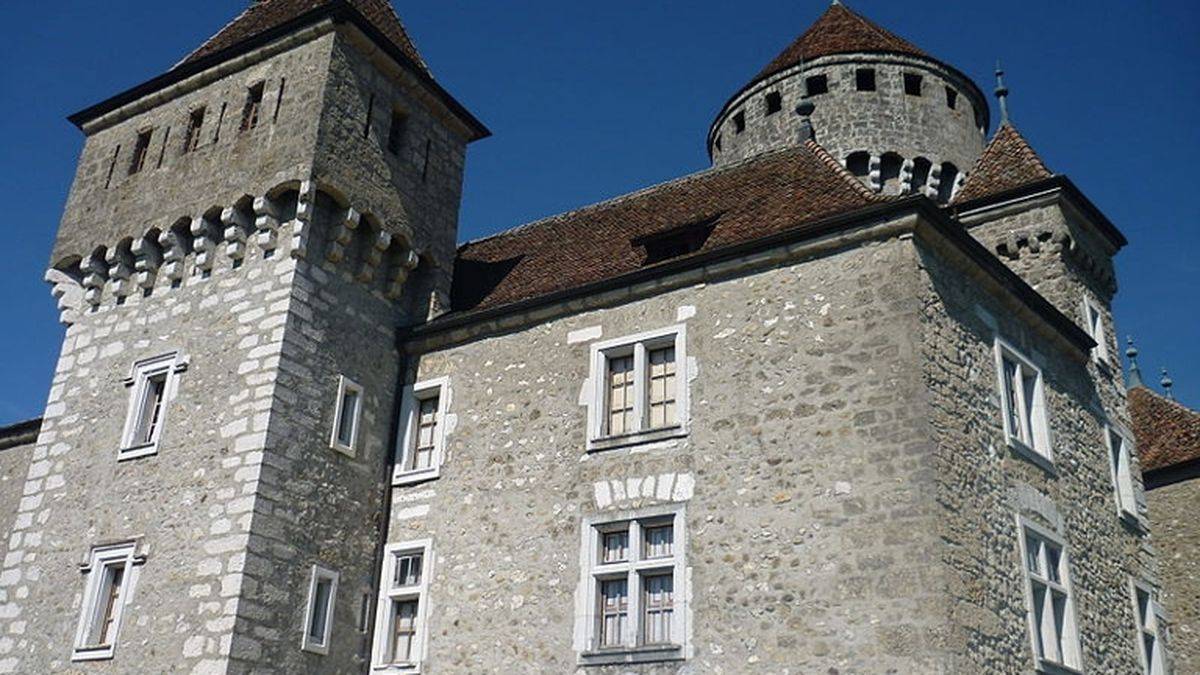 The castle | ©Broenberr / CC-BY-SA
The castle | ©Broenberr / CC-BY-SAThe foundation of the stronghold
A castle already existed here, in the 10th century, owned by bishops of Savigny. The fortress was besieged by archbishop Renaud de Forez, who demolished it...
The reconstruction took place in the 13th century, and transformed the modest castle into a real impregnable fortress!
At that time, the fief belonged to Montrottier family, and fell to the Grésy lords in 1265. And then, in 1427, Pierre de Menthon bought the place.
Menthon family? Such a mighty family in Savoy! Pierre was the duke’s councillor.
By the way, at that time, the castle looked like a polygon flanked by an inner courtyard; to the south-west, we had the Nuns rectangular tower altered in the 15th c. but probably older than that: it had a covered way at the top of it.
The other sides of the tower had several main buildings, with, to the north, the Knight’s building: inside, the Knights’ room, 15 metres long, with a giant chimney and a very nice ceiling.
In middle of the courtyard, a keep, of course, 30 metres high (with 5 storeys), linked to the other building by a drawbridge. Pierre de Menthon probably raised it…
Wind of change
But the French Revolution came and Savoy was annexed by France in 1792... until then, the Menthon family ruled over Montrottier!
In 1839, it was over: the castle fell to baron de La Rochette.
A George Sand from Savoie
Baroness de Rochette became a widow at the age of 27. Her husband owned Montrottier in 1839, but he died just after that.
Fortunately, our baroness was a damned lady!
When her husband died in 1845, she decided to devote all her money to restore the old castle: architect Delimoges completely altered it, especially the Eastern and Western wings.
Such a building work was pretty expensive, so our baroness, ruined, had to sell Montrottier.
An early flapper!
The baroness only wore trousers, smoked pipe and cigars, rode his horse through the countryside, with her knife and her gun…
Louis Veuillot wrote in his book Cà et là (part II, chapter IX) about a visit he made in the castle…
“We were in the baroness’ barony. The castle had thick walls. It kept all its turrets, with old weather vanes. The small living-room was full of curious things from Louis XV period. But we noticed a big pipe and a tobacco pouch. These kind of things were pretty unusual in a widow baroness’ boudoir!
–Was it the baron's pipe?
–No, answered the person who introduced us, it’s the baroness’ one.”
–Oh, oh!
–The baroness promised to her dying husband she would never marry again, she wept a lot, and started to live her new life. She used to behave like a boy, when she was young, now she became a young man.”
The visit of Montrottier
So, like we previously said, the baroness had to sell Montrottier.
It finally fell to Léon Marès in 1906: this one had a huge art collection... a collection he gave with the castle to the Florimontane academy, in 1916!
That’s why today, we still can see Flemish tapestries (18th c.), armours, precious furniture, and 4 bronze low-reliefs made in 1530 by Hans and Peter Vischer!
